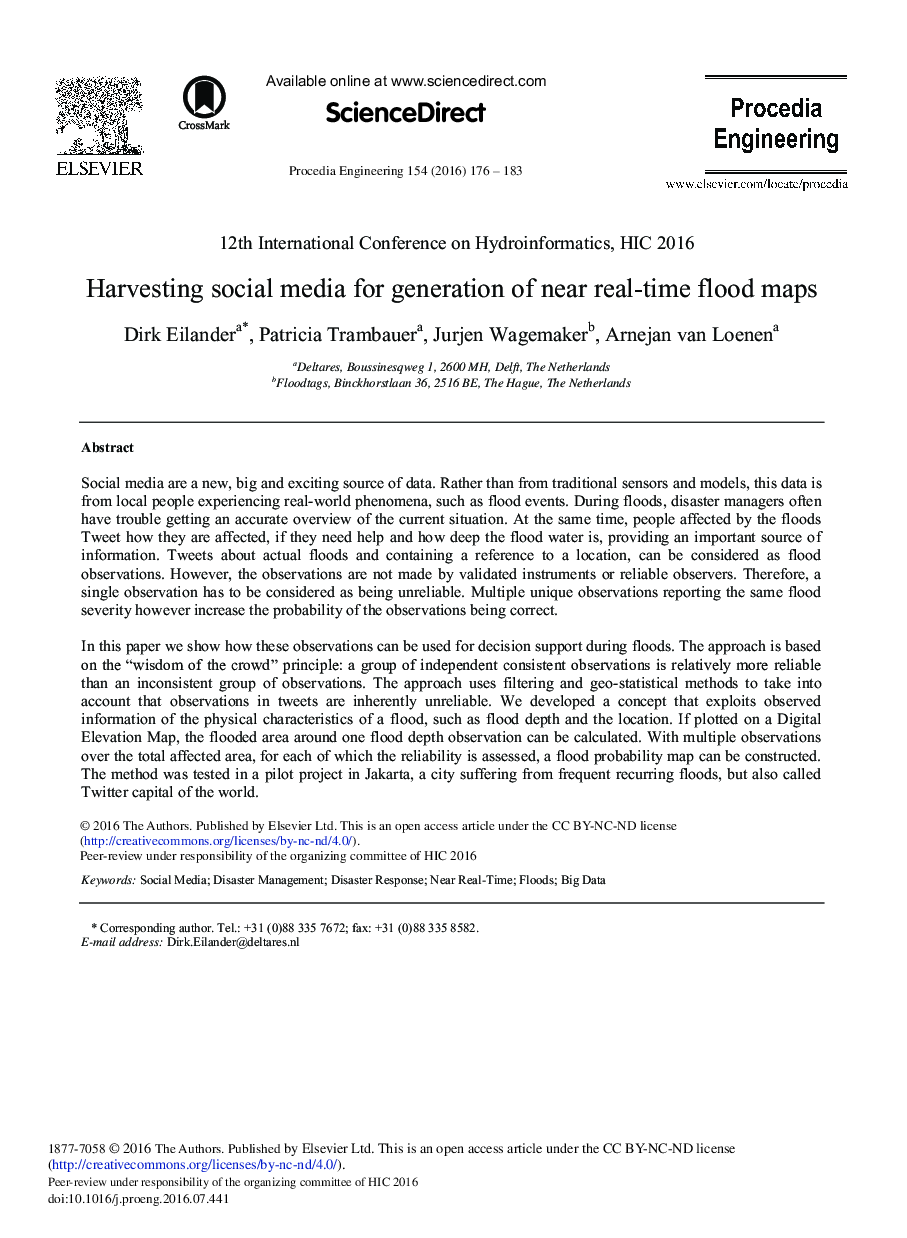| Article ID | Journal | Published Year | Pages | File Type |
|---|---|---|---|---|
| 5030447 | Procedia Engineering | 2016 | 8 Pages |
Social media are a new, big and exciting source of data. Rather than from traditional sensors and models, this data is from local people experiencing real-world phenomena, such as flood events. During floods, disaster managers often have trouble getting an accurate overview of the current situation. At the same time, people affected by the floods Tweet how they are affected, if they need help and how deep the flood water is, providing an important source of information. Tweets about actual floods and containing a reference to a location, can be considered as flood observations. However, the observations are not made by validated instruments or reliable observers. Therefore, a single observation has to be considered as being unreliable. Multiple unique observations reporting the same flood severity however increase the probability of the observations being correct.In this paper we show how these observations can be used for decision support during floods. The approach is based on the “wisdom of the crowd” principle: a group of independent consistent observations is relatively more reliable than an inconsistent group of observations. The approach uses filtering and geo-statistical methods to take into account that observations in tweets are inherently unreliable. We developed a concept that exploits observed information of the physical characteristics of a flood, such as flood depth and the location. If plotted on a Digital Elevation Map, the flooded area around one flood depth observation can be calculated. With multiple observations over the total affected area, for each of which the reliability is assessed, a flood probability map can be constructed. The method was tested in a pilot project in Jakarta, a city suffering from frequent recurring floods, but also called Twitter capital of the world.
